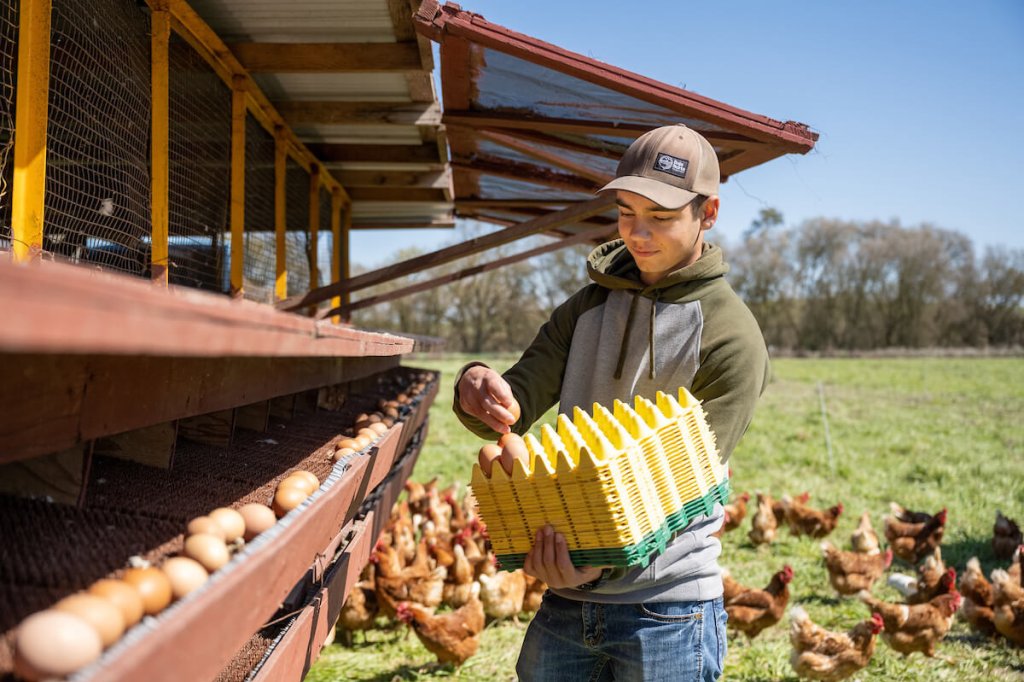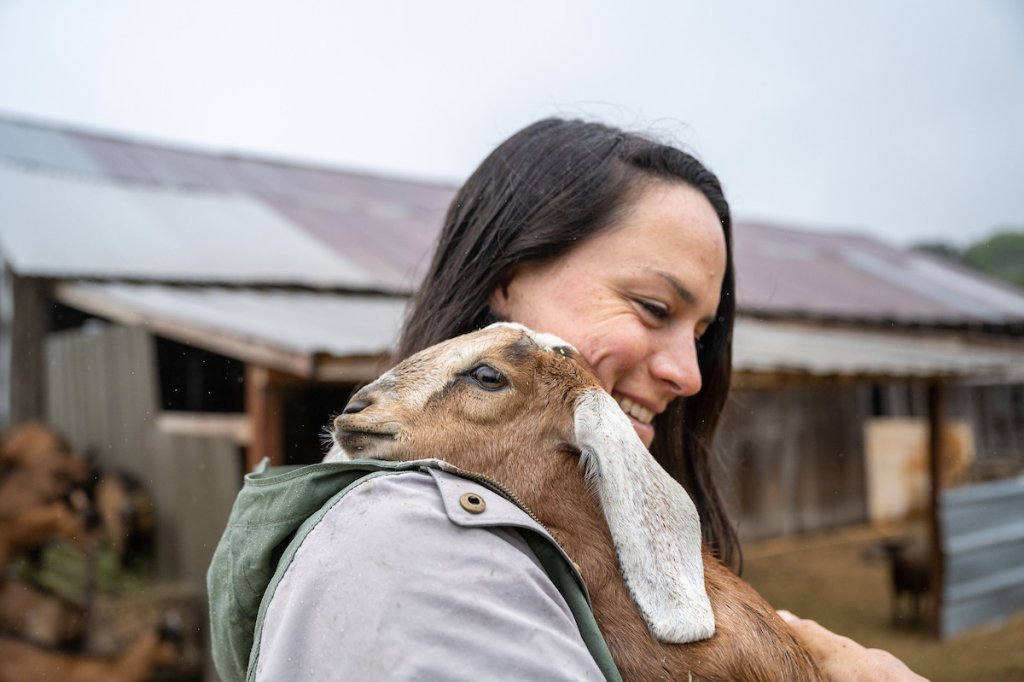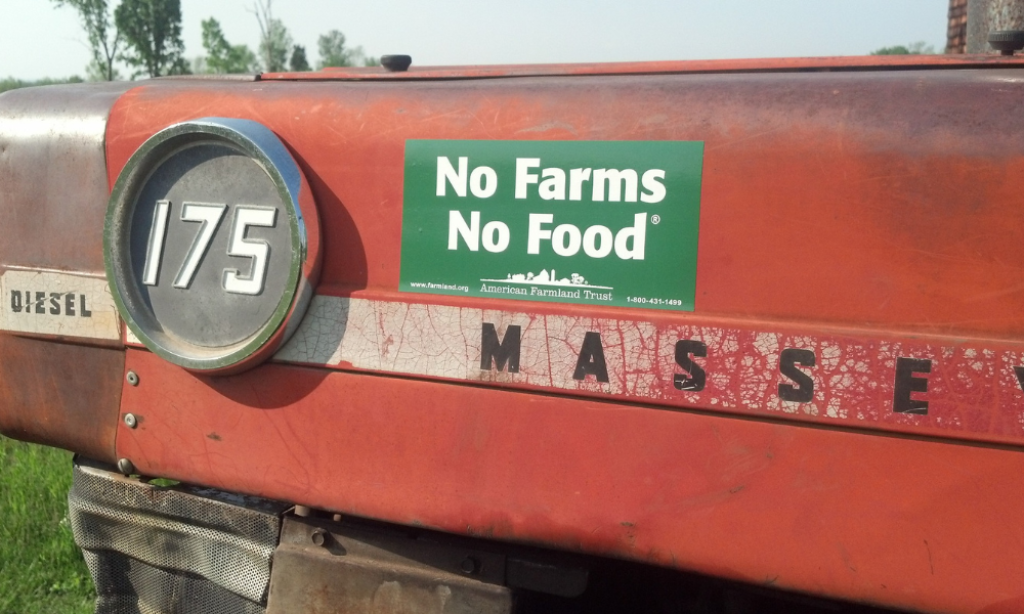Meet Mayra and José Reyes of Cortez Family Farm
In the fields outside Santa Maria, lies the Cortez Family Farm which represents three generations of farming in the Central California region. The Central California farm grows all kinds of vegetables, including celery, broccoli, Brussel sprouts, spinach, beets, and onions, as well as blackberries, raspberries, blueberries, and especially strawberries. Mayra and José Reyes own Cortez Family Farm, which is named after the farm Mayra’s father started in 1990. After he retired in 2017, Mayra was the only sibling who wanted to stay in agriculture. So, she took over the farm, and kept the family name of Cortez to honor her father.
“I grew up surrounded by agriculture,” says Mayra. “My parents were temporary farm laborers who moved around the state to harvest different seasonal crops. My mother came from Aguascalientes and my father from Nayarit in Mexico, but I was born here. During my summer breaks in high school, I would help my parents work the fields. My husband José is from the Chapala region in Jalisco state. He migrated to the U.S. in search of better opportunities.”
The Cortez Family Farm leases roughly 21 acres of farmland, divided up with 13 acres on one plot and about 8 on another. The landowners only allow them to lease the farmland on a year-to-year contract, according to José.
“This uncertainty makes it very difficult,” he explains. “We do not feel like we can really improve the land. If we invest too much, we do not know if we will have the land next year. We implement organic practices but are not certified organic. The owner has to certify the soil as organic, and the process is difficult.”
Despite this lack of certification, the farm does use regenerative agricultural practices.
“We use beneficial insects to combat pests instead of chemical fungicides and pesticides,” says José. “Our farm works to get ahead of diseases, so they do not become a problem. We prepare the soil with chicken manure, and we make compost from rotted produce and leaves. We combat weeds through solarization, using a plastic cover to kill them. And we still do a lot of work by hand, like weeding. We would like to incorporate more practices. For instance, we do not use natural mulching, we still use regular plastic mulching on strawberries.”
The Cortez Family Farm deals with various challenges when irrigating their crops on two different locations.
“At the smaller location, we have one pump, and it is the only irrigation system,” he says. “Fortunately, we have water, and we are the only renters on that property. We use drip irrigation on our vegetables.”
The situation is different on the larger 13 acre plot, where they share the water pump with 15 other renters on subdivided plots.
“The soil is loamy, which means we must carefully plan the crops we grow,” he says. “Not everything is suited for this type of soil, especially crops that require a lot of water. We work with our neighbors to set up an irrigation schedule. This requires good planning because we can only irrigate when it is our turn. Otherwise, we have to wait until the next irrigation cycle.”
In the larger field, the farmers also run drip irrigation. The only time they use sprinklers is with strawberry crops at the start of the season. All the farmers in this field work independently of each other.
“We are all so busy, we don’t really get together for workshops,” says José. “But our farm personally would be open to getting technical assistance on irrigation practices. Right now, we don’t get any assistance from the USDA or other government or local agencies.”
This family farm takes pride in selling directly to consumers, primarily through farmers’ market stands in Central California and Southern California locations, such as Los Osos, Morro Bay, Downtown San Luis Obispo, Ojai, and Malibu.
As José explains, “We do not sell to packing houses or coolers because we want to focus on direct sales to customers. Our farm is so small that we do not have large enough quantities to sell to these companies. Plus, we already have an established clientele who look for our produce weekly. They like the fact that we do not use harmful pesticides, only organic fertilizers.”
Selling only through farmers’ markets can have its challenges, especially after the coronavirus pandemic struck in 2020. The Cortez Family Farm was severely impacted by the market closures. “This is our only source of income, so we ended up using our savings,” José remembers.
The Cortez Family Farm continued to work the only two markets that remained open. There were new market stand requirements, so they invested in new items such as packing boxes, sanitizers, gloves, and PPE for their stands, even though their business dropped to a quarter of normal sales. They also started a small Community Supported Agriculture (CSA) service to make it easier for customers to purchase produce. When the schools closed, Mayra stayed home with her two daughters who would help assemble the delivery boxes. The older son jumped in to help his father with deliveries, each taking a different delivery route.
“We wanted to serve our community,” Mayra says. “Some customers are older and have been buying from us for a long time. Sometimes we might only have five orders in an area, but we still made sure all those orders were delivered so they would not have to go to the supermarket as often. We saw this as mutual aid. The customers kept buying from us and we continued to serve the community. We set up an Instagram and Facebook page to keep our customers informed and share pictures of the farm.”
This hardworking farming family was also awarded AFT’s Farmer Relief Fund grant. This microgrant provided a thousand dollars to spend as needed after the pandemic. The Cortez Family Farm used the funds to purchase PPE like gloves and sanitizers, as well as boxes for their CSA. They also made business cards to revamp their business. The family is grateful for the support.
“There are not a lot of grants out there,” explains José. “Often the deadline has passed by the time you hear about it,” he says. “Typically, the aid goes to the larger companies that understand the system better, while the small producers are left with little help.”
José knows it is very hard to be a farmer, and especially hard to be a small-scale farmer. Still, he remains hopeful, “You can’t really compete with the larger companies. But if you try and work hard, anything is possible if you put your heart into it.”
Cortez Family Farm – Facebook and Instagram
Special thanks to Carmen Carrasco, Farms for a New Generation Outreach Specialist, who provided the interview and Spanish translation services. Read her thoughts on socially disadvantaged farmers in California.



